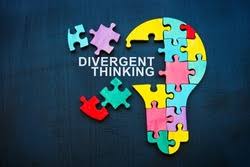Word Analysis Activities Prek-12 grade: Measure
For the lower-level processors (i.e., orthographic & phonological), Moats (2020) asserts that “one can use phonic or dictionary symbols to transcribe the phonetic properties of words, but the disadvantage of such a phonic representation system is that many speech sounds must then be presented with letter combinations…” (pg. 32).
We will be analyzing the word measure in the Merriam-Webster’s Collegiate Dictionary 11th edition pg.769. The phonetic transcription \me-zhər\ or \ˈmā-\. Note: these variants are based on geographical location and dialects.
| 1st sound | 2nd sound | 3rd sound | 4th sound | Silent e | |
Phonemes | \ĕ\ | /zh/ | /er/ | |||
Graphemes | M | ea | s | ur | e |
These points address what we hear and see when using the dictionaries phonetic symbols (i.e., less than dark print or pronunciation):
· The second most common way to spell the sound \ĕ\ are with the letters ea as in bread.
· The first most common way to spell the sound /zh/ is with the letter s as in vision.
· The third most common way to spell the sound /er/ are with the letters ur as in purchase.
· The letter is e silent and serves a marker to make the word from looking like plural.
Part 2
Students are then exposed to multiple meanings of the vocabulary word, which strengthens the meaning processor through accessing the dictionary definitions. This word is identified as a homograph with the first entry being a noun and the second a verb. The root is *me, which means to measure.
Part 3
Therefore, when we critically reflect on the word’s definition and consider all the elements learned, we can put the word into perspective (i.e., context) with the following activity.
Direction: read the sentence and write a definition or synonym for the word ‘measure’. Use contexts clue to help you determine the words meaning.
Sentence: The geometrician had to measure the dimensions of the field to get the length and width.
Can you think of a sentence using the word?
Until next time,
Shawn Anthony Robinson PhD




Comments
Post a Comment